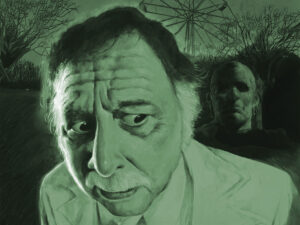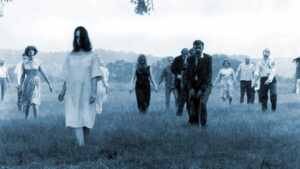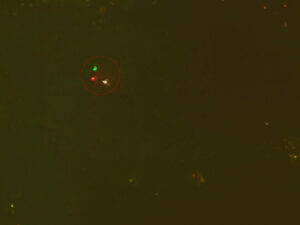Every July for Bastille Day, some Americans raise their glasses to liberté, égalité, and fraternity with a nod to their Gallic cousins across the Atlantic. But behind the tricolor toasts lies a more tangled Franco-American inheritance, one steeped in wine. This isn’t a tale of clinking glasses and cultural harmony. It’s a stranger story: how the New World borrowed France’s symbols of refinement but lost the deeper thread of meaning they once carried. A journey that began with Enlightenment ideals ends today in tasting rooms that more closely resemble Disneyland than Burgundy.
We begin, inevitably, with Thomas Jefferson.
In the 1780s, the American minister to France wandered through the vineyards of Burgundy, Bordeaux, and Champagne like a man possessed. He recorded soil types, barrel shapes, and cellar temperatures with the fervor of a surveyor mapping civilization itself. Back in Monticello, he planted European cuttings by the thousands, convinced that viticulture could take root in the republic as a symbol of democratic refinement. But the vines failed. Virginia’s hot, humid climate and an invisible pest—phylloxera, a root-devouring aphid unknown to science at the time—undermined the dream. Jefferson never bottled a single vintage.
But history loves irony. In the 1860s, phylloxera crossed the Atlantic and began to ravage the very vineyards Jefferson had admired. French botanist Pierre Viala scoured the American South for salvation and found it in the same native vines Jefferson had dismissed. European grape varieties were saved by being grafted onto American rootstocks. The irony was stark: Jefferson’s homeland had failed to imitate France, but it ended up keeping France alive. Authenticity, it turns out, is not a matter of replication but of relationship.
Then came 1976.
The Judgment of Paris—where California wines beat French classics in a blind tasting—shattered the old prestige order. What followed was not simply pride or ambition, but a pageant of simulation. Wine became an industry of appearances: faux-Tuscan villas, scripted tasting flights, curated “rustic” décor, wines engineered for critics rather than tables. A winery became less a farm and more a branded stage set. And the guests? Tourists cast in the role of connoisseur, clutching their souvenir glasses.
French theorist Jean Baudrillard would have recognized the trick. In Simulacra and Simulation, he warned that capitalism’s final stage produces hyperreality: simulations that don’t hide the truth, but replace it entirely. Disneyland, he argued, is labeled imaginary so the rest of society can pretend to be real—when in fact, it too has become a theme park. Now substitute Napa for Anaheim and the metaphor begins to rot into fact. The authenticity you’re invited to discover isn’t behind the curtain; it is the curtain. Everything—down to the soil in the potted lavender—has been scripted.
Yet not everyone bought a ticket.
In 1950s Beaujolais, a chemist and part-time winemaker named Jules Chauvet quietly rejected industrial methods. He fermented with wild yeasts, refused additives, and tolerated unpredictable, sometimes volatile results. These weren’t flaws, he insisted, but expressions. His notebooks, passed hand to hand, lit a quiet fire that decades later would ignite the natural wine movement. In forgotten corners of Oregon, Vermont, and the Sierra Foothills, a generation of winemakers now let microbes, weather, and accident have a say—less product, more presence.
But something else vanished in the theme-park conversion. Not just terroir. Not just microbes. Something more human: convivialité.
Coined by Jean Anthelme Brillat-Savarin in 1825, convivialité names the joy of eating and drinking together—of conversation, contradiction, and bodily presence. It’s not tradition versus innovation. It’s the third thing that holds them both. It resists the logic of the marketplace, where wine must become a brand, a rating, a collectible. Instead, it insists: wine lives between people.
This “third thing” is what Romanian-French physicist and philosopher Basarab Nicolescu calls le tiers inclus—the included middle. Unlike binary logic, which pits opposites against one another (natural vs. technological, tradition vs. modernity), the included middle is the space where contradiction breathes, where seemingly irreconcilable truths can both be held. It is the logic of complexity, of ecology, of actual lived experience. And of wine—if we let it.
A wine made in this logic does not merely “pair” with food. It needs the table, the voices, the clinking, the silence. It does not announce itself with a label but arrives gently, asking to be noticed.
Baudrillard warned that simulation thrives where meaning thins. The answer is not nostalgia—it’s depth. Meaning returns not when we return to the past, but when we attend to the present. When we notice the hard-working crew pruning at sunrise. The fungus beneath the soil. The old neighbor who drinks from a chipped glass and doesn’t post about it. Authenticity isn’t something you find behind the gates—it’s a practice. A willingness to let the world speak before you do.
And when that happens, the coin-operated fortune teller falls silent. The tasting room stops parroting its script. And the wine, finally, begins to speak.


